Life as a scientific diver, underwater camera operator, commercial diver or even technical diver is likely to bring you to remote places and often in a limited team. In order to safely work in these remote places, the diving team must have a Diver Medic Technician (DMT) among their number. This is the person who is first to act in a medical emergency, trained to administer advanced medical attention and life support to diving casualties on the surface or at pressure in a hyperbaric chamber. In addition the diver medic communicates with the company/emergency doctor and executes their directions in treating the casualty prior to the arrival of more skilled medical aid. This team member is vital as other medical attention may be several hours away or even require emergency medical helicopter evacuation from the site. Although this is a heavy burden to take on, training in advanced first aid techniques can help to save lives.
In January of this year I travelled to DDRC Healthcare in Plymouth, England to take part in their Diver Medic Technician training course for two weeks.
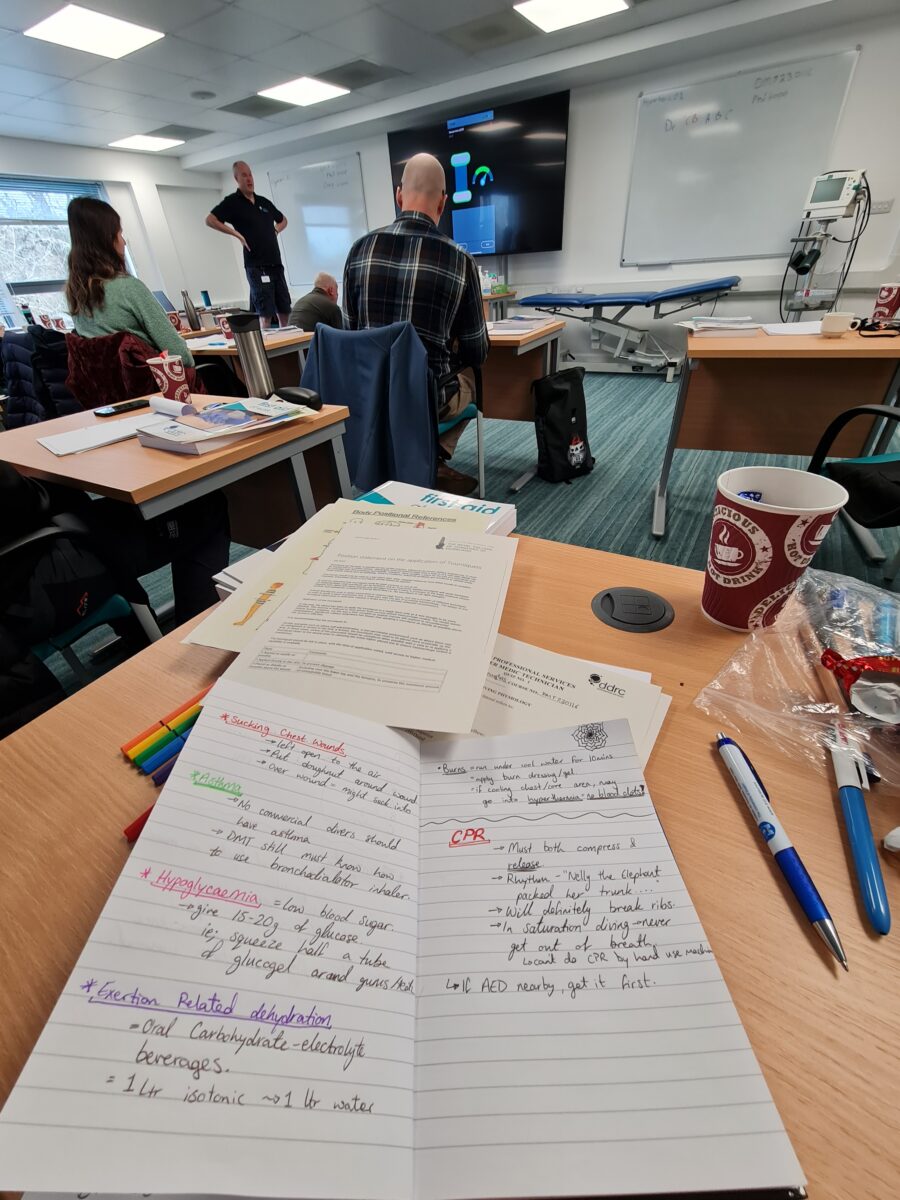
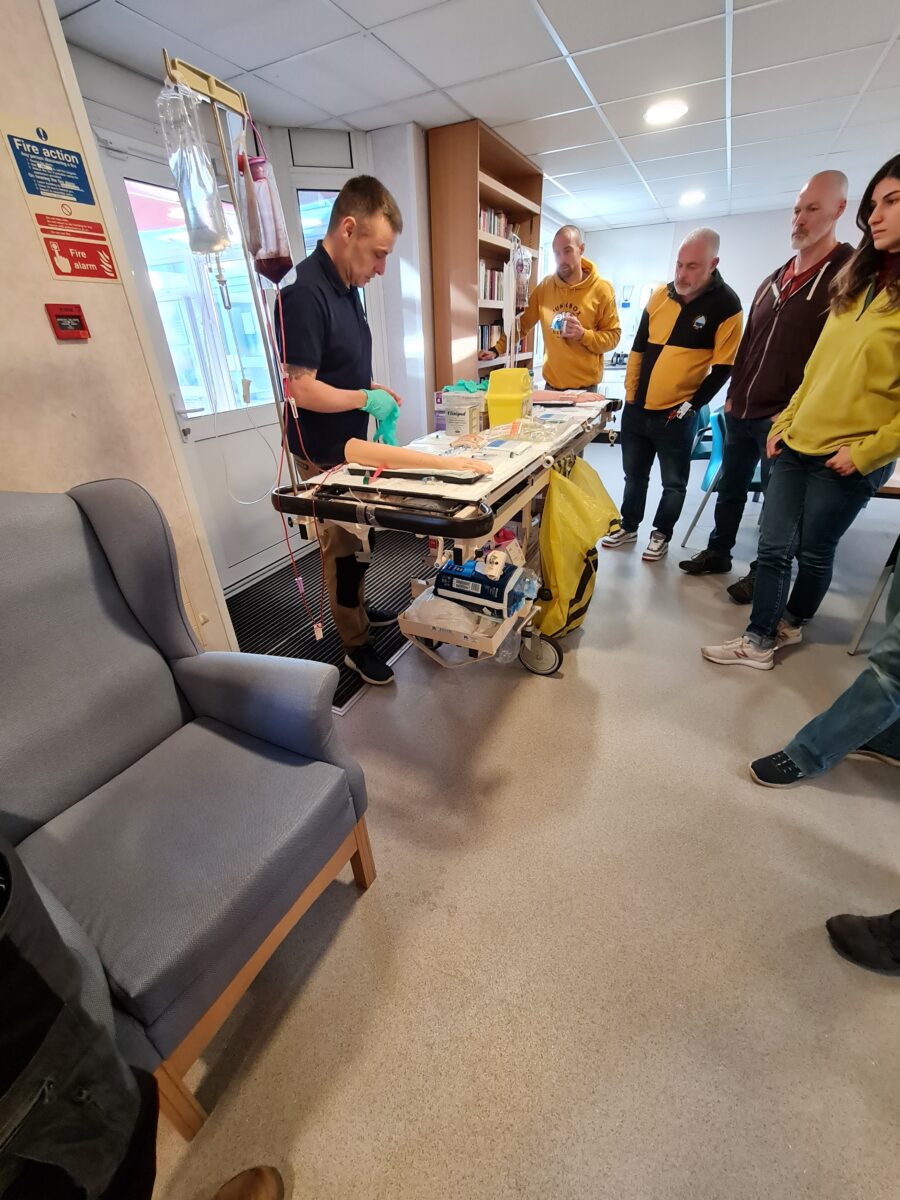
We covered a huge range of theoretical and practical topics such as diving physiology, resuscitation, advanced airway management, trauma management, intravenous fluid infusions, suturing, pleural drain insertion and even urinary catheter management. Before we began the practical training, theory for each topic was covered in great detail. Explaining each of the circumstances in which such medical interventions may be required. How they work, typical problems we might encounter and how to overcome them.
It was fascinating to learn more about human physiology and techniques that medics and paramedics are using everyday to save lives. I have always had a particular interest in anatomy and physiology and being at the DDRC, surrounded by medics and hyperbaric doctors, was a great place to delve into this interest.
I felt like each day I was expanding my knowledge tenfold and new questions would constantly arise in my mind as to how certain things worked. Einstein’s quote “The more I learn, the more I realise how much I don’t know” rang true for me in this course. I have been lucky so far in my life to not have been witness to many medical emergencies, so speaking with nurses and doctors working on the frontlines of a hyperbaric hospital was fascinating. Learning about what they dealt with each day and how they could use certain techniques to save lives.
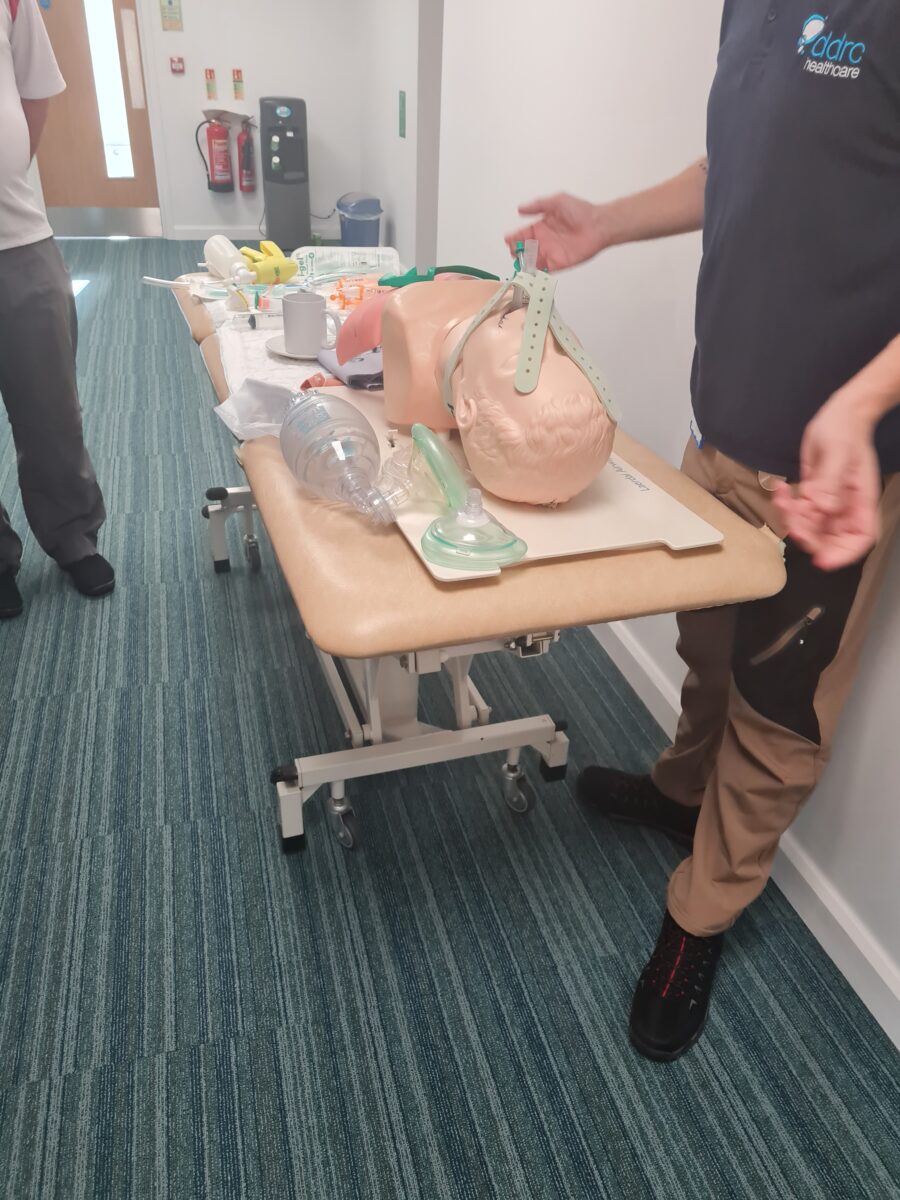

After theory in the mornings, we had a quick break and could visit the local pasty van. Which was remarkably similar to an ice-cream van, arriving with a tuneful jingle to alert all of those in the area of its provisions of freshly baked pasties!
After our pasty/lunch break we delved into practical training each afternoon, practising each technique until we could do it perfectly.
I was surprised and impressed by the huge range of hyper-realistic models that they had at the DDRC for us to practise on. Arms with an almost genuine skin texture, complete with veins/arteries with life-like blood. It was a brilliant way to be able to practise intravenous cannulation, inserting a drip with medicine or in our case saline solution.

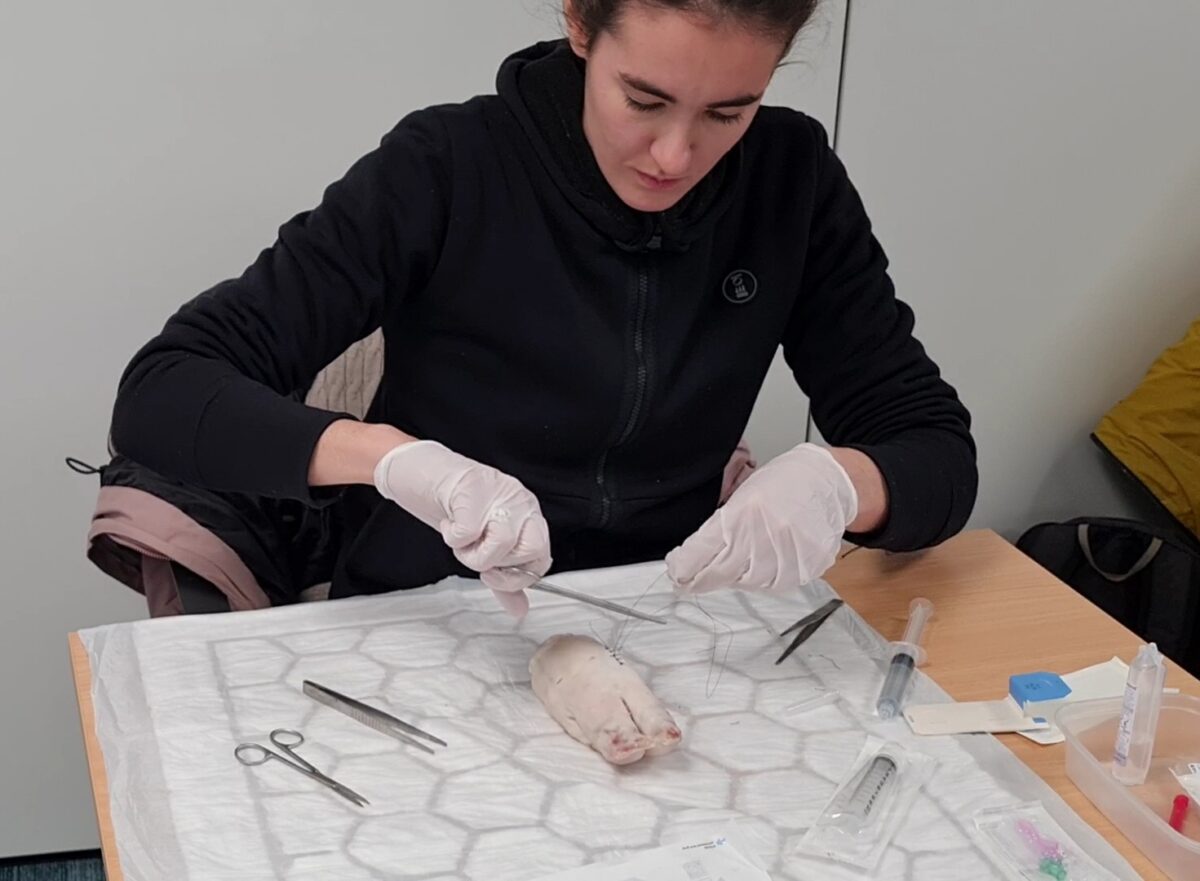
I had never before learned to suture open wounds and the technique was brand new to me. However, I was an avid embroiderer as a child and was very surprised to learn that the stitch used by doctors is very similar to the technique of creating an ‘bullion knot’ embroidery stitch!
Like many of the techniques that we learned during the course, I hope that I never have to use this new skill in the field but I am incredibly glad that I now understand how, as just a few well placed stitches can save a person’s life.
The DDRC Hyperbaric chamber complex is a phenomenal piece of engineering, it houses one large, multi-place Krug chamber with a capacity for nine people; two smaller, multi-place Comex chambers and one mono-place Perry chamber designed for solo patients.
During the course we had training in two different chamber types. Practising CPR in the tight space of a Comex chamber, taking a dive in the ‘Krug’ chamber, taking blood pressure readings in the pressurised chambers and assessing our ‘patients’ or course peers.
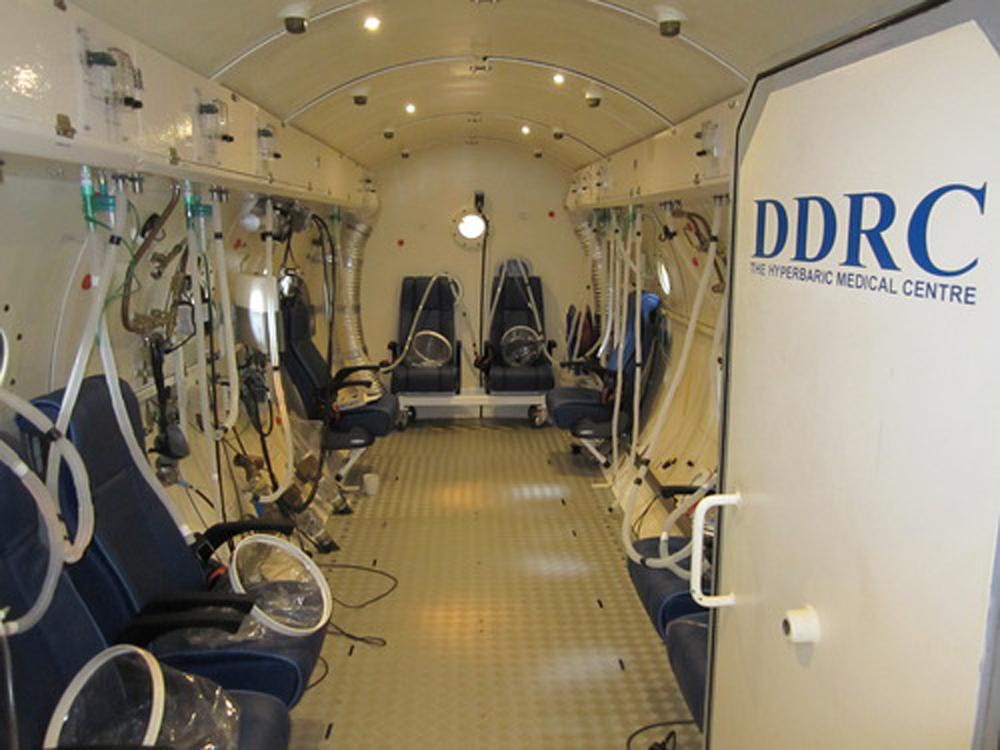
Toward the end of the course we began our practical assessments, a series of exams where we were assessed on our ability to both work as a team of medics and individually in surprising and life-like circumstances. For our group exam we assembled our medical bags with everything we might need to respond to an emergency aboard an offshore diving vessel. We were then alerted that there had been an ‘explosion in the engine room’ and four people were missing! We headed down to the ‘engine room’ or basement of the DDRC, where we had to carefully search through the rows of compressed gases and pipework that service the chambers and compression system of the centre. The lights were out and three casualties were in various conditions, groaning and with full prosthetic injuries and artificial blood. It was a gruesome scene and got everyone’s heart racing! One casualty unfortunately was very far gone and had no pulse and wasn’t breathing (this was a Resusci Anne) and we began immediately to perform CPR and set up the automated external defibrillator (AED) machine. After what felt like a very long time but realistically was about 15 minutes, we were told that a med-evac helicopter was on its way and we had 10 minutes to get all the casualties lifted out onto the ‘helipad’. This involved a lot of teamwork and coordination from everyone involved, as the patients had to be stabilised and if receiving CPR couldn’t be left for more than a few seconds. This assessment, although highly intense, gave everyone involved a real sense of the responsibility of working as a diver medic. It felt good afterwards to sit and talk through everything that happened with the instructors. They had been impressed with how we had all kept our cool and dealt with the situation as a capable team. The experience will stick with me and I hope it will help me to perform with the same clear thinking and precision in a genuine emergency situation.
I felt inspired by the depth of knowledge and understanding of the instructors on the course. Their extensive firsthand experience working as diver medics and paramedics gave our classes and the topics we covered a vivid sense of reality which I hope has prepared me for an eventuality where I have to attend to a diver casualty in the same way. This is a heavy responsibility to take on, but after speaking to divers who work in remote areas I understood that having this kind of training in advance could save lives. As I hope to work in such areas in the future on research expeditions, this training felt vitally important.
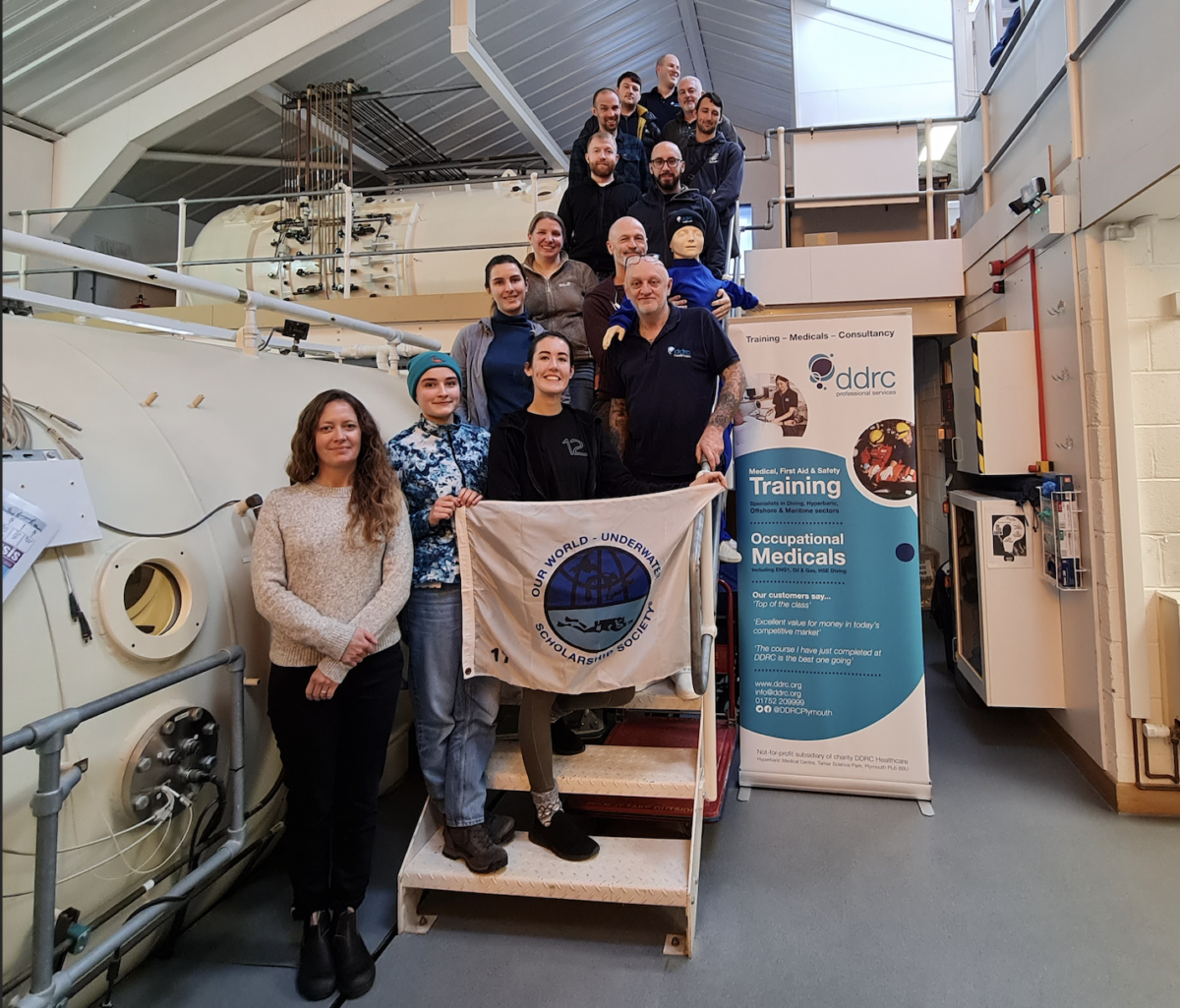
Thank you so much to DDRC Healthcare and all of my instructors for giving me the opportunity to progress my medical and first aid training to the next level, in the best environment I could imagine. I am excited to someday return to the DDRC for further training or research.
Thank you to Rolex and OWUSS for making dreams come true. Also thank you to my incredible equipment sponsors Fourth Element, Suunto, Halcyon Divesystems, Reef Photo and Video, Nauticam and Reel Diving.